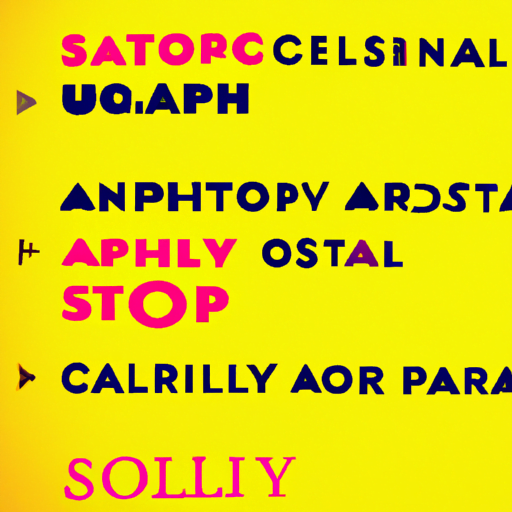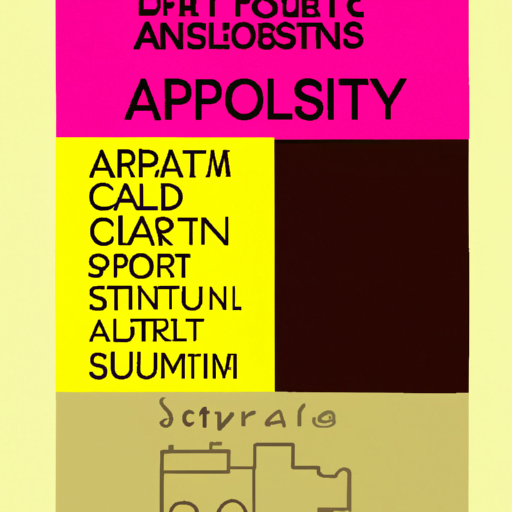
-
Table of Contents
- Cultural Typography: Exploring Diverse Writing Systems in Design
- The Power of Cultural Typography
- Exploring Different Writing Systems
- 1. Latin Alphabet
- Challenges and Considerations
- 1. Language and Meaning
- 2. Typeface Selection
- 3. Layout and Hierarchy
- Case Studies: Cultural Typography in Design
- 1. Coca-Cola’s Chinese New Year Campaign
- 2. The Museum of Islamic Art’s Branding
- The Future of Cultural Typography
- Conclusion
Cultural Typography: Exploring Diverse Writing Systems in Design

Typography is an essential element of design that plays a crucial role in conveying messages and evoking emotions. While many designers are familiar with the Latin alphabet, there is a vast world of diverse writing systems that offer unique challenges and opportunities for creative expression. In this article, we will explore the fascinating world of cultural typography, examining different writing systems from around the globe and their impact on design.
The Power of Cultural Typography
Cultural typography goes beyond mere aesthetics; it is a powerful tool for communication and cultural expression. Each writing system carries its own history, traditions, and cultural significance. By understanding and incorporating these diverse writing systems into design, designers can create more inclusive and impactful visual experiences.
One of the key benefits of cultural typography is its ability to evoke a sense of place and identity. When a design incorporates a writing system that is closely associated with a particular culture or region, it can instantly transport the viewer to that place and create a stronger connection. For example, using Chinese characters in a design can evoke a sense of Chinese culture and heritage, even if the viewer does not understand the language.
Exploring Different Writing Systems
There are numerous writing systems used around the world, each with its own unique characteristics and challenges. Let’s take a closer look at some of the most prominent ones:
1. Latin Alphabet
The Latin alphabet is the most widely used writing system in the world, primarily due to its adoption by European languages and its subsequent spread through colonization. It is characterized by its use of 26 letters and is the foundation of many Western typography traditions.
2. Chinese Characters
Chinese characters, also known as Hanzi, are one of the oldest writing systems in the world. They are logographic, meaning that each character represents a word or concept. Chinese typography is known for its intricate strokes and calligraphic beauty.
3. Arabic Script
The Arabic script is used to write the Arabic language and is also widely used for other languages such as Persian and Urdu. It is a cursive script that is written from right to left and is known for its flowing and decorative nature.
4. Devanagari Script
The Devanagari script is used to write several Indian languages, including Hindi, Sanskrit, and Marathi. It is an abugida script, meaning that each character represents a consonant with an inherent vowel sound. Devanagari typography is characterized by its horizontal lines and distinctive letterforms.
Challenges and Considerations
Designing with cultural typography presents unique challenges that designers must navigate to ensure effective communication. Here are some key considerations:
1. Language and Meaning
Understanding the language and meaning behind a writing system is crucial for effective design. Each character or letter carries its own significance, and misinterpretation can lead to unintended consequences. Designers must research and consult with native speakers to ensure accurate representation.
2. Typeface Selection
Choosing the right typeface is essential for cultural typography. Different writing systems have their own typeface traditions, and selecting a typeface that aligns with the cultural context is crucial. For example, using a traditional calligraphic typeface for Arabic typography can enhance the visual experience and evoke cultural authenticity.
3. Layout and Hierarchy
The layout and hierarchy of text play a significant role in cultural typography. Some writing systems, such as Arabic, require right-to-left reading, which affects the overall composition and flow of the design. Designers must consider these factors and adapt their layouts accordingly to ensure readability and visual harmony.
Case Studies: Cultural Typography in Design
Let’s explore some real-world examples of cultural typography in design:
1. Coca-Cola’s Chinese New Year Campaign
Every year, Coca-Cola releases a special edition bottle design to celebrate Chinese New Year. The design incorporates Chinese characters and traditional Chinese colors to honor the cultural significance of the festival. This campaign resonates with Chinese consumers and reinforces Coca-Cola’s commitment to local traditions.
2. The Museum of Islamic Art’s Branding
The Museum of Islamic Art in Doha, Qatar, has a visually striking brand identity that incorporates Arabic calligraphy. The logo and typography reflect the elegance and beauty of Arabic script, creating a strong visual connection to Islamic art and culture.
The Future of Cultural Typography
Cultural typography is gaining recognition and importance in the design world. As globalization continues to connect people from different cultures, the need for inclusive and culturally sensitive design becomes paramount. Designers are increasingly embracing cultural typography to create meaningful and impactful designs that resonate with diverse audiences.
Advancements in technology and design tools are also making it easier for designers to work with different writing systems. With the availability of multilingual fonts and software that supports complex scripts, designers have more resources at their disposal to explore and experiment with cultural typography.
Conclusion
Cultural typography is a fascinating and essential aspect of design. By exploring diverse writing systems and incorporating them into our designs, we can create more inclusive and culturally sensitive visual experiences. Understanding the language, meaning, and traditions behind each writing system is crucial for effective communication. As designers, let’s embrace the power of cultural typography and use it to create impactful designs that celebrate the richness of our global heritage.
